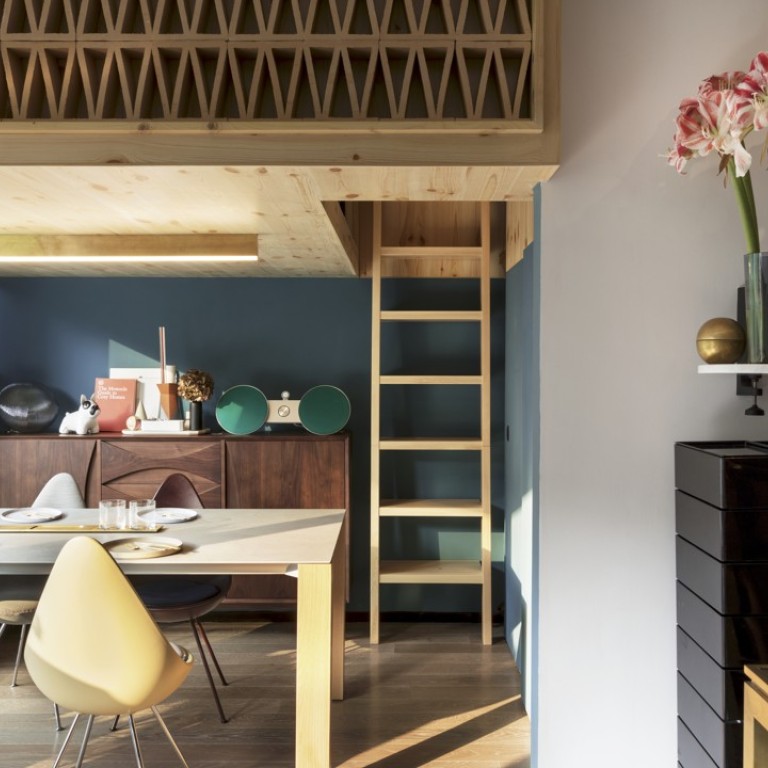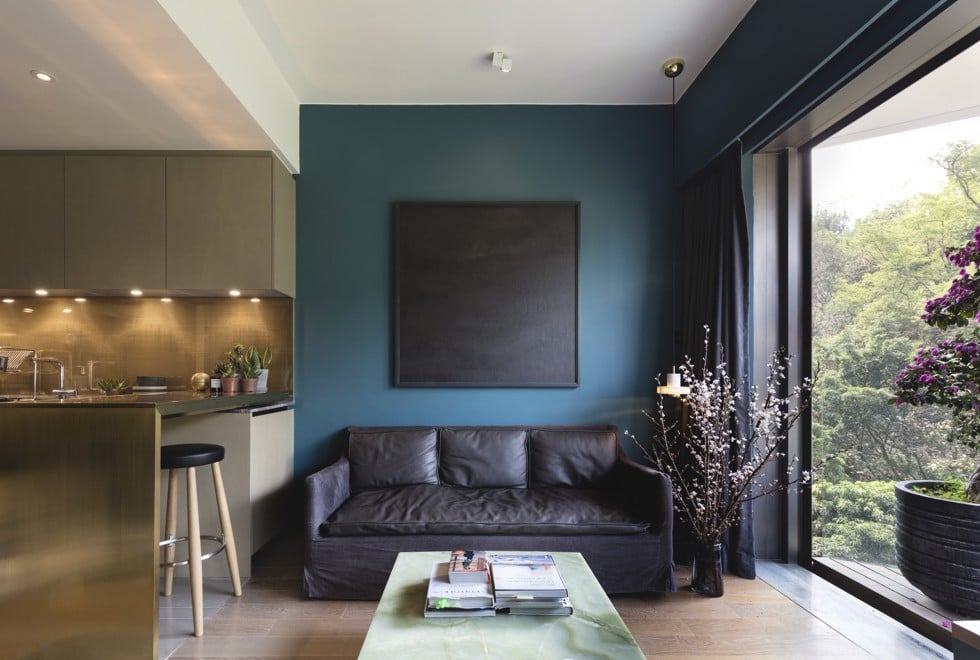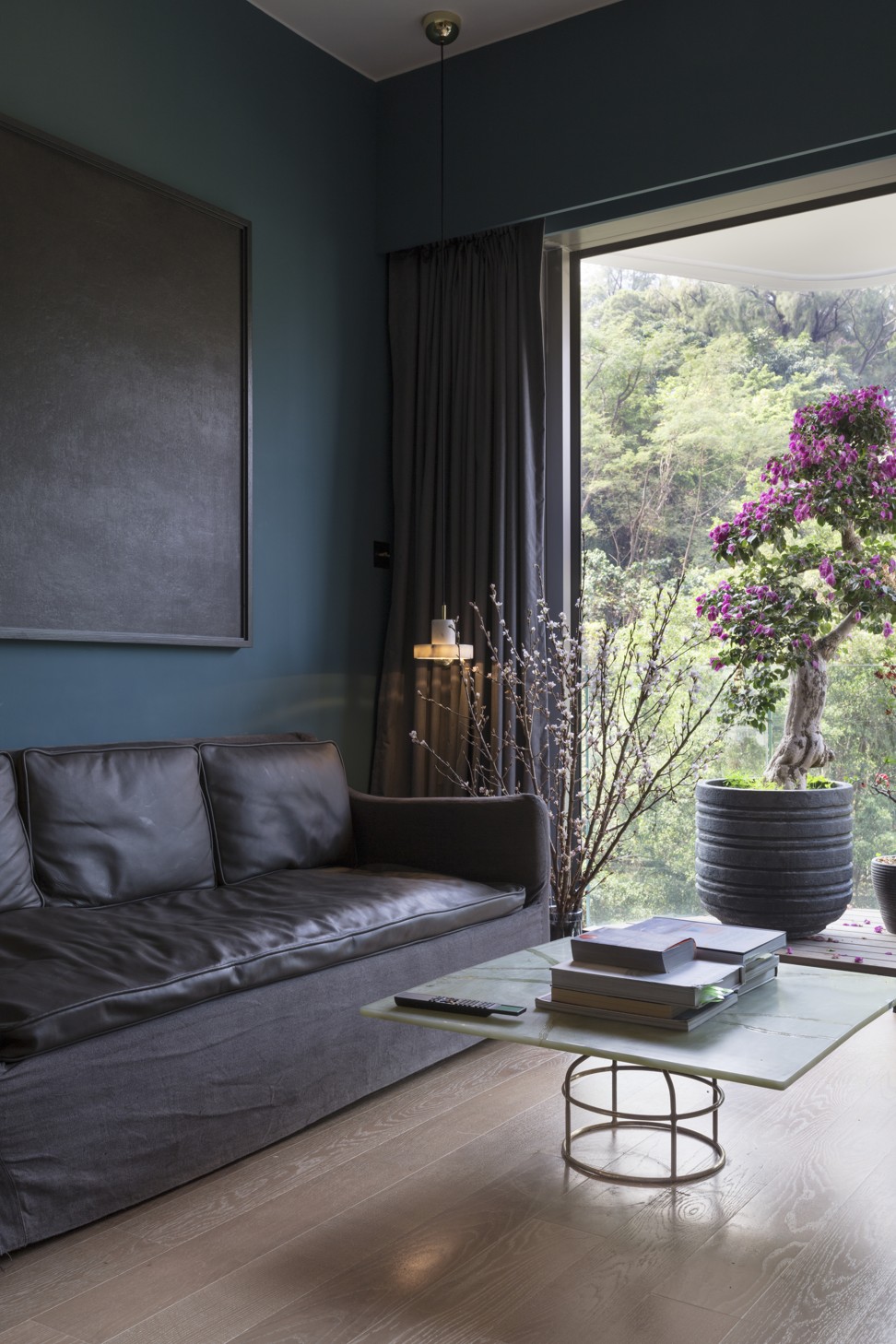
Tiny tree-house-inspired Hong Kong apartment takes its design cues from the forested hillside it faces
A young professional’s cosy 370 sq ft flat in Kowloon – complete with elevated ‘bunk bed’ – blends seamlessly with its leafy surroundings
Big is not necessarily better, as Hong Kong architect Nelson Chow Chi-wai’s design for a 370 sq ft home for a young client proves.
“Thoughtful design is transformative even for the smallest of spaces,” says Chow, of NC Design & Architecture. “But it is more than simply a question of efficiency and functionality because a real home also needs to be cosy and should reflect the personality of the person who lives there.”
Consisting of a living area, kitchen, bathroom and an elevated double “bunk bed”, the playful tree-house design concept takes inspiration from the view through picture windows of a densely forested hillside in Kowloon.
“The apartment is very much a city-style loft but still feels like it is in the forest,” Chow says. “It was obvious that the interiors should reflect both its urban and natural settings.”
The apartment, in a new 30-storey building, originally featured a single-level layout with one bedroom. Removing the bedroom’s wall and raising the sleeping space above the dining area opened up the living room, giving the home a more spacious feel.
The kitchen and bathroom, both featuring a sleek contemporary design, were left untouched. Keen to blur the boundary between indoors and outdoors, Chow painted the interior walls a dark moody blue and added a bougainvillea tree to the mini-garden-like, glass-sided deck, to draw the eye outside.
Preferring clean, uncluttered lines, the designer was similarly restrained with furnishings and accessories.
“I wanted to create a calm feeling that is best achieved with layers of natural materials like wood, stone and glass in subtle colours,” he explains. “The darker blue tone adds a nice touch of contrast to the white ceiling and lush green trees outside.”
For storage, Chow introduced a bento-box-style shoe cabinet near the front door, while clothes and paraphernalia are stored out of sight in a large double-height cupboard near the dining area.
Making artful use of the arboreal theme, he clad the 40-sq-ft cloistered sleeping space in pinewood, adding a built-in shelf, reading light and a long horizontal window with a view of the hillside. A sturdy ladder attached to the wall plays on the idea of a tree house.
The open-plan living room and kitchen area now comfortably accommodate about half a dozen guests. Chow was also responsible for furnishing the new space, adding a collection of low-sitting modern and vintage pieces in an earthy palette.
“The apartment is flooded with natural light so it was important to keep the interiors airy and light, maximising sun exposure throughout,” he says.
When it comes to creating a home in a compact space, Chow says design should be about creating areas that feel unique and deliver a fresh, urban aesthetic.
“A home needs to be part of your identity, so it is worth being bold and taking a risk with reflecting your own personality and creating a one-of-a-kind retreat.”
Dining and sleeping area Chow painted the lower half of the cupboard the same Dulux dark blue (HK$20,000 in total) as the living and dining spaces for visual continuity. To reinforce the cosy, Scandi-cabin aesthetic of the elevated bed space, the upper level is clad in matching pinewood.
TRIED + TESTED
Tile work Nelson Chow created the artwork above the sofa with a black Gigacer tile (HK$1,200) sourced from Anta and framed by Crownwell for HK$4,000. The 5kg ceramic tile has a subtle bumpy texture that catches light at different angles and changes the appearance of the slab.









